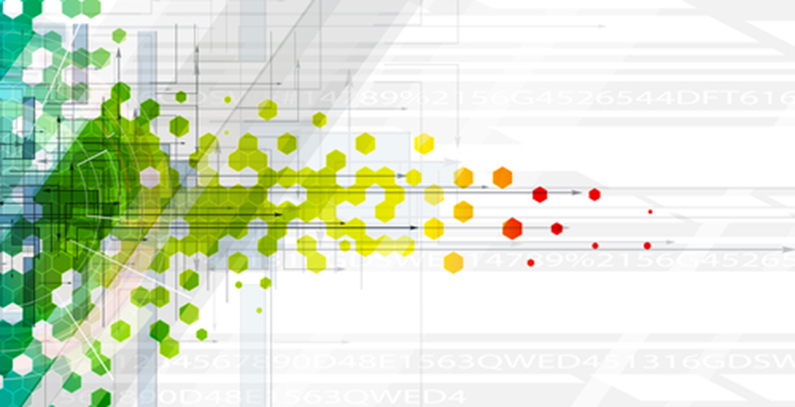
By Tatjana Mitevska, M&E, Public Outreach and Gender Specialist, USAD CEI Project and Marija Ignatova Gjosheva, LED Specialist, USAID CEI Project, Winrock International
Recently, Macedonia improved the quality of its energy balance with introduction of new methodology for energy data collection and processing harmonized with EUROSTAT. This is resulting in enhanced capabilities of Government of Macedonia for better planning of the country’s energy needs, improved management of existing energy resources and diversification of energy supply, ultimately leading to enhanced long term energy security of the country. Energy balance is a strategic document for reporting and planning energy needs and resources for any country.
The challenge
Macedonia had two separate energy balances prepared independently by Ministry of Economy (MoE) and State Statistical office (SSO), using different sets of forms and different methodologies. This had made the process of planning country’s energy needs and reporting of energy consumption a troublesome and highly volatile in the past. Тhe SSO on one hand, and the MoE together with the Energy Agency (EA) on the other hand, were using different forms and questionnaires to collect same/similar information from the same energy producers. SSO developed their energy balance using the EUROSTAT methodology, while the MoE was using different methodology in accordance with the secondary energy legislation effective at that time. The energy balance produced by the MoE was an indicative and planning five-year document, while the energy balance produced by the SSO was a statistical one-year document. This resulted in reporting different energy values. Additionally, they had different schedules for data collection, and were lacking means to share information, which was driving duplication of data collected from energy producers, wasting their time and resources.
The energy balance produced by the Ministry of Economy was an indicative and planning five-year document, while the energy balance produced by the State Statistical office was a statistical one-year document. This resulted in reporting different energy values
The process
The initiative for improving and harmonizing the energy data collection process started with joint cooperation of two USAID Projects: EC-LEDS Regional program and USAID Macedonia Clean Energy Investment Project (USAID CEI Project). It was implemented as a result of the good collaboration between the projects and the Cabinet of the Deputy Prime Minister for Economic Affairs (DPMEA), MoE, EA, and SSO. This effort enabled the stakeholders to seat on the same table, to discuss and negotiate methods to streamline, simplify and harmonize the process of energy balance data collection, reporting and sharing. A working group established for this purpose managed to introduce the EUROSTAT methodology for the MoE energy balance and to enable the MoE to use the energy data that was already collected by the SSO. In support, the two USAID projects organized a study tour for the members of the working group to Serbian Ministry of Mining and Energy to exchange experiences with Serbian colleagues about their database and software for collecting energy data. The final outcome was introduction of the new and improved process for energy data collection and new energy balance methodology. To apply this in practice, USAID CEI Project provided assistance to draft necessary changes in the relevant laws, by-laws and rulebooks regulating the energy balance. The new methodology for calculating the country’s energy balance is effectively in use from January 2015. To enable harmonized and smooth implementation of the novelties introduced, the USAID CEI Project in collaboration with the MoE organized series of nine hands-on trainings delivered to more than 80 companies, producers and energy users that contribute data for the country’s energy balance, in September 2015. The 2016 energy balance, presented to the public on December 10, 2015, is the first balance developed using the new EUROSTAT methodology.
A working group established for this purpose managed to introduce the EUROSTAT methodology for the MoE energy balance and to enable the MoE to use the energy data that was already collected by the SSO.
Picture 1: Public presentation of the proposed Macedonia Energy Balance for 2016. Macedonia Chamber of Commerce, December 10, 2015.
The benefits
Now, with the greater coordination between the MoE and the SSO, it is possible to produce energy balance harmonized with the EUROSTAT methodology, to support development of national policies, and meet reporting requirements to the Energy Community. A single set of data collection forms are developed and distributed to energy producers. The new energy balance provides sound grounds for making additional calculations related to greenhouse gas emissions, reductions, and planning the future targets as required by the international organizations to which Macedonia is member. It also provides for more efficient use of Government and energy producers resources that are now engaged in only one annual data collection and reporting process. They report past and future projection data to SSO and to MoE, respectively, using the same standard forms. Additionally, they can make more precise and realistic projections of energy needs for the upcoming year only, as oppose to the three years requirement in the past. For the MoE this means better coordination with the SSO, leading to decreasing the level of effort as the MoE now benefits from the readily available data from the SSO.
A single set of data collection forms are developed and distributed to energy producers. The new energy balance provides sound grounds for making additional calculations related to greenhouse gas emissions, reductions, and planning the future targets as required by the international organizations to which Macedonia is member.
The future
This initiative has gone further and encouraged the MoE to pursue the idea for introduction of an electronic energy data collection process. The MoE is expecting budget allocation to accomplish this initiative in 2016, and the Project will be supporting the MoE to design and develop the electronic system for energy data collection for country’s energy balance. Introduction of this system will increase transparency and improve data entry and data integrity, while limiting the burden on the companies that provide energy data. It will enable better coordination and ensure completeness, accuracy, and timely transmission of the data, as well as easily generating variety of reports for different government needs.









